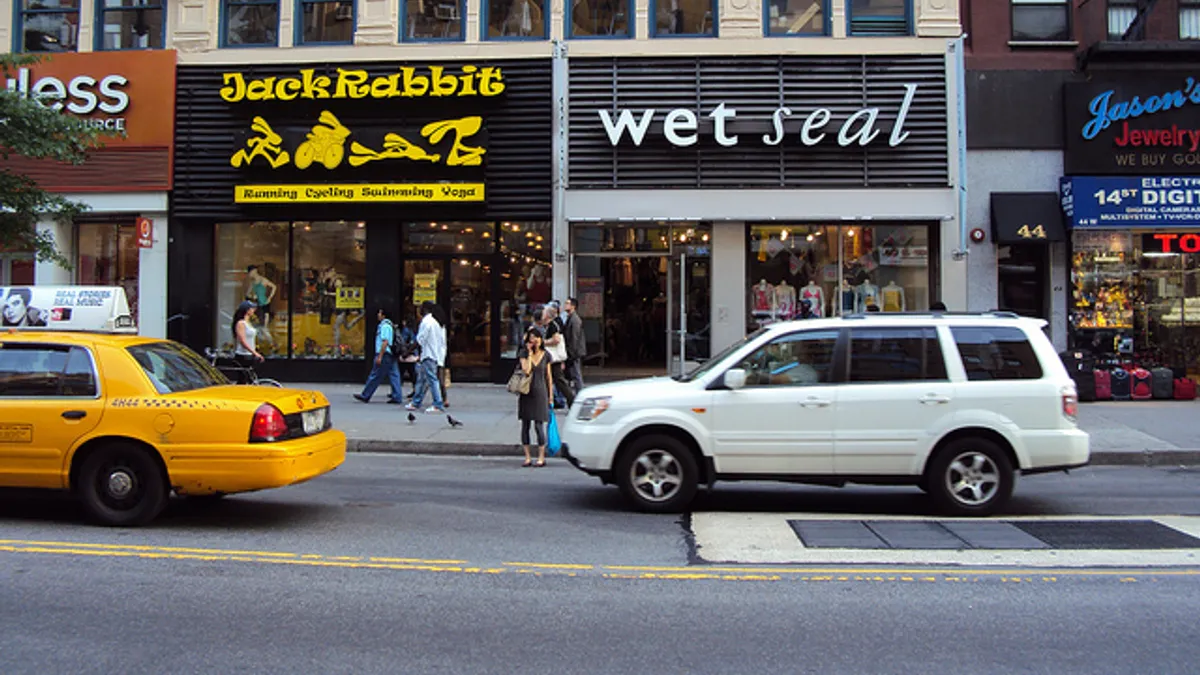Dive Brief:
-
Teen apparel retailer Wet Seal will open 13 pop-up stores in cities across the country on Nov. 3, just in time for the holiday season, according to a company press release.
-
The stores, planned for General Growth Properties malls in nine states from coast to coast, will range from 3,000 to 5,000 square feet and will offer contemporary fashion and holiday gift items, the company said.
-
Private equity firm Versa Capital Management bought the retailer in April 2015 as it emerged from Chapter 11 bankruptcy protection, for which it had filed in January that year.
Dive Insight:
When Wet Seal filed for bankruptcy more than a year ago, the teen retailer shuttered a third of its stores. Now, these pop-ups are a way to quickly leverage physical locations nationwide in time to capture shoppers’ attention over the holidays.
The move is a sign that Wet Seal — unlike American Apparel, which is now faltering after its own emergence from bankruptcy earlier this year — could be finding its footing in a tough apparel retail environment. "We see an opportunity for additional brick and mortar locations during the peak holiday season," CEO Melanie Cox said in a company statement. "Customers have reached out to request the return of Wet Seal stores to their local areas, and we are pleased that we are able to meet that need.”
The stores will pop up in GGP shopping centers in Arizona, Florida, Georgia, Illinois, Michigan, New Jersey, Oklahoma, Pennsylvania, and Washington and could be a boon to those malls, according to GGP CEO Sandeep Mathrani. "We are focused on curating our shopping centers with the retailers that our customers want," Mathrani said in a statement. "Brick and mortar plays a significant role in the holiday-shopping experience, and through its pop-ups, GGP is excited to bring the Wet Seal brand to new communities.”
Cox, brought on by Versa last year, has said she wants to bring meaning back to the brand, something it sorely needs in order to move beyond its doldrums. That meaning, according to Cox, is founded in the California vibe that won over its fans more than 10 years ago, rather than the parade of styles found at fast-fashion retailers like H&M or Forever 21.
With so many teen-focused apparel retailers aiming for a similar demographic, a move to a more definitive look could work — if teenagers like that look. The plan is to provide clothing more likely to appeal to older young people — older teens and college kids — who are more likely to have a fashion sense of their own and also are more likely to have more money to spend.
This story is part of our ongoing coverage of the 2016 holiday shopping season. You can browse our holiday page for more stories.













